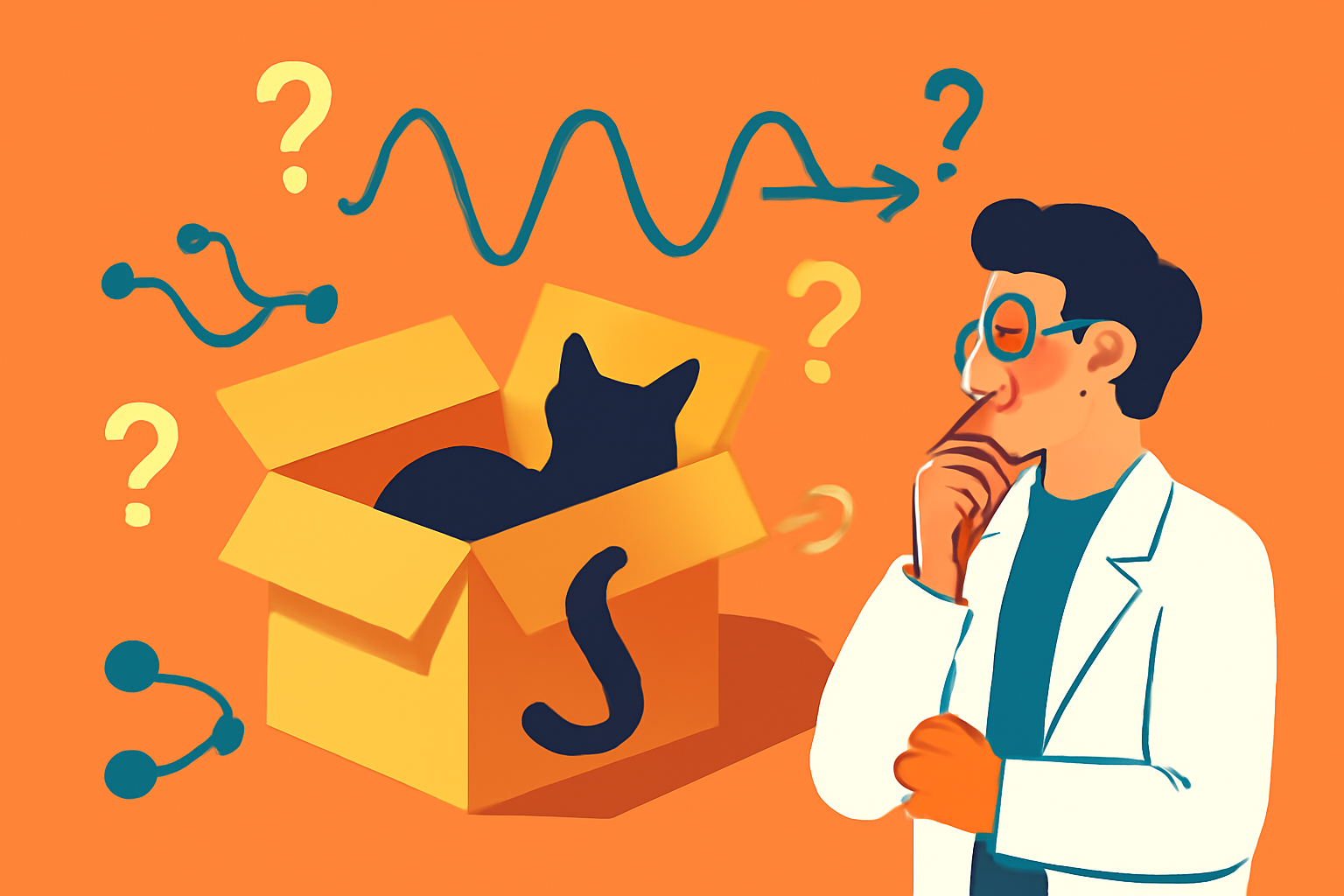
Schrödinger's Cat is one of the most renowned thought experiments in quantum mechanics, illustrating the counterintuitive nature of quantum superposition. Formulated by physicist Erwin Schrödinger in 1935, this thought experiment challenges the classical view of reality and highlights the peculiarities of quantum principles.
Core Concept
In the thought experiment, a cat is placed inside a sealed box with a radioactive atom, a Geiger counter, a vial of poison, and a hammer. If the Geiger counter detects radiation due to the decay of the atom, it triggers the hammer to break the vial, releasing the poison and killing the cat. Quantum mechanics suggests that until the box is opened and an observation is made, the atom exists in a superposition of both decayed and undecayed states. Consequently, the cat, too, is in a superposition of being both alive and dead.
Beyond the Paradox
Wave Function Collapse: The crux of Schrödinger's Cat lies in the wave function collapse. Until an observation occurs, quantum entities exist in a superposition of potential states. The paradox is often cited as a metaphor for the measurement problem in quantum mechanics — how and why a quantum system transitions from multiple probabilities to a single outcome upon observation.
Decoherence: Advances in quantum theory have introduced the concept of decoherence, which offers insight into the transition from quantum to classical systems. Decoherence suggests that the act of observing a quantum system is not instantaneous but a gradual process in which quantum states become entangled with the environment, thus destroying superposition and making the system appear classical.
Many-Worlds Interpretation: Another resolution posits the Many-Worlds Interpretation, which suggests that instead of the wave function collapsing, all possible outcomes of quantum measurements are realized in a vast multiverse. In this scenario, the cat is both alive and dead in separate, non-communicating branches of reality.
Quantum Entanglement: Schrödinger's Cat also highlights quantum entanglement, where the fate of the cat becomes instantly tied to the state of the radioactive atom. This raises questions about non-locality and the speed of information transfer, challenging classical notions of causality and locality.
Implications
Schrödinger's Thought Experiment transcends its original paradox to become a foundational narrative in understanding quantum mechanics' philosophical and physical implications. It sparks discussion about reality's nature, the observer's role, and the boundaries of scientific observation. As quantum technologies advance, these discussions are more critical than ever, influencing quantum computing, cryptography, and information theory.
In summary, while Schrödinger's Cat begins as a paradoxical thought experiment, it evolves into a profound exploration of quantum phenomena, driving scientific inquiry and philosophical debate in the quest to understand the fundamental workings of the universe.